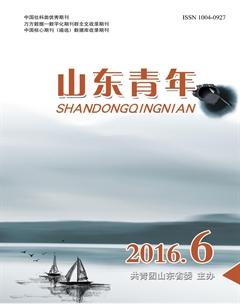Review of A Textbook of Translation
王存娟
Abstract: In recent years, firstly, we are lack of original translation books; secondly, there are more and more graduate students who are studying translation. Thus, we need to import foreign translation study books, like A Textbook of Translation, in order to have better understanding of this book and Peter Newmark ideas of translation, there is a need to conduct a brief review of this book.
Key Words:A Textbook of Translation;Book Review;Peter Newmark
1. Introduction
A Textbook of Translation was written by Peter Newmark, it was firstly published by Prentice Hall International (UK) Ltd in 1988. And then it was republished in Shanghai Foreign Language Education Press in 2001. Based on traditional translation theories; Peter Newmark has proposed new translation theories. And Peter Newmark purpose in this book is to offer a course in translation principles and methodology for final-year-degree and post-graduate classes as well as for autodidacts and home learners. He provides some appropriate English texts and examples in this book. In general, this book can be divided into two parts, part Ⅰof the book is concerned with a discussion of principles of translation, part Ⅱ of the book deals with methods of translation and consists mainly of a review of thirteen texts for translation criticism. In order to have better understanding of this book, we need to conduct a brief review of this book, in this paper, the author will illustrate the contents of the book, and then make a list of expert commentaries, finally, draw the conclusion about the significance and value of this book.
2. Book Contents
2.1 Principles
This part contains 20 chapters in this book, the first chapter is the introduction of this book, it points that the authors purpose and how to be good translator and how to deal with the translation theory. Chapter 2, 3, 5, 7, 8 mainly discuss the basic translation methods; it includes the analysis of a text, the process of translation, translation methods, literal translation and the other translation procedures. In chapter 2, Peter Newmark mainly discusses the analysis of a text, including tenor, style, readership, and situation and so on. Therefore, one has to study the text not for itself but as something that may have to be reconstituted for a different readership in a different culture. In chapter 3, Peter Newmark provides translating procedures; it begins with choosing a method of approach. Secondly, when we translate, we translate with four levels more or less consciously in mind: (1) the textual level (2) the referential level (3) the cohesive level (4) the natural level. Chapter 5,7,8 mainly discuss the translation methods, the author makes a clear distinction among word-for-word translation, literal translation, faithful translation, semantic translation, adaptation, free translation, idiomatic translation, communicative translation and natural translation. One of the Peter Newmarks great contributions is the elaborations on communicative translation and semantic translation.
Chapter 17 is the translation criticism, it is an essential component in a translation course: firstly, because it painlessly improves ones competence as a translator; secondly, because it expands knowledge and understanding of ones own and the foreign language, as well as perhaps of the topic; thirdly, because, in presenting someone with options, it will help people to sort out ideas about translation.
In chapter 4, 6, 11, 12, Peter Newmark illustrates the language functions and translation, the unit of translation and discourse analysis and the use of componential analysis in translation based on modern linguistics.
In chapter 9, 10, 13, 14, 15, Peter Newmark discusses translation and culture, the translation metaphors, the translation of neologisms, technical translation and the translation of serious literature respectively. Finally, in chapter 19, Peter Newmark gives some advices for exams and translation practices.
2.2 Methods
This part includes thirteen texts, the thirteen texts that follow are material for four types of exercise: (1) a translational analysis of a source language text; (2) translations of the same text to illustrate the difference between “semantic” and “communicative” translation as methods; (3) translations with commentaries; (4) examples of translation criticism. It concludes original texts and reference translation of the texts of British, France and Germany.
3. Expert Commentaries on the book
Liu Chongde (2000)is the first Chinese scholar who introduces the book A Textbook of Translation, and he not only acknowledges and accepts Newmarks opinions, but also praises that Newmarks opinions which contribute to the development of translation theories and practice. A.O. Mojola (1989)claims that this book is a successor to Newmarks Approaches to Translation. It clearly very detailed and extensive, covering more topics and aspects of translation theory than are usually covered in related texts.
4. Conclusion
In the book A Textbook of Translation, Peter Newmark explains the translation theories in details and puts forward new translation theories. Many domestic and foreign scholars give various comments; from those comments, the author draws a conclusion about the significance and value of this book. Majorities of scholars acknowledge and accept the contributions of Peter Newmarks opinions which benefit to the development of translation theories. Although the book has some several flaws such as its various theories are only generalizations of translation practices, some of the shorter pieces in Chapter 18 are inadequate and only offer a few pointers, often controversial and fluctuating and so on. The author also thinks that the book A Textbook of Translation is a significant book for the research of translation theory.
[References]
[1] Peter Newmark. (1988). A Textbook of Translation. Shanghai Foreign Language Education Press.
[2]A.O. Mojola. (1989). Review: A Textbook of Translation. SAGE.
[3]刘重德. (2000). 一致性:刘重德和Peter Newmark翻译理论之比较研究. 中国英汉语比较研究会.
(作者单位:兰州交通大学,甘肃 兰州 730000)

